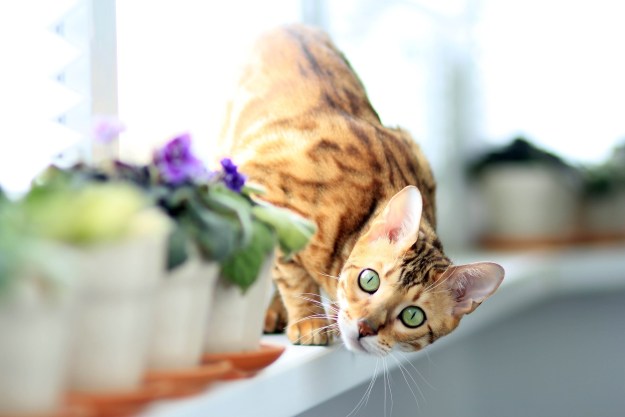
If you want to train your cat to sleep in a regular spot away from your bed and off of potentially dangerous surfaces like radiators, invest in a heated cat bed. These life-changing products keep your kitty warm so they can adjust to sleeping in their own spot. We researched the best heated cat beds on the market and came up with this list of the top contenders to help you choose.
Heated cat beds are either plug-in or self-heating. Electric-powered beds may offer more features like automatic temperature control that adjusts when your pet is on or off the bed. Self-heating beds might be best for curious cats that could find electric wires interesting enough to play with. These beds are engineered with multiple layers that absorb body heat and reflect the same heat to warm up your pet. Now, let’s check out our strongest candidates.
K&H PET PRODUCTS Thermo-Kitty Heated Pet Bed
Best Electric

This responsive bed from K&H PET PRODUCTS heats up to your cat’s average body temperature when in use and cools down to 12 to 15 degrees above the room temperature when not in use. Wash the cover in the machine when it’s dirty or stained using the gentle cycle. The soft cover is filled with polyfil for a good rest every time.
FurHaven Self-Warming Pet Bed Mat
Best Self-Warming

This self-warming bed from FurHaven is a soft sleeping surface with an insulated polyester fiber core and thermal insert that redistributes absorbed body heat back to your pet. When it’s time for a cleaning, toss this bed into the washing machine without worrying about ripping or fraying. The bed is light enough for travel when camping or road trips.
Pet Magasin Thermal Self-Heated Bed For Cat
Best Budget Pack

Pet Magasin’s two-piece heated bed is the best budget pack for homes with multiple cats. A layer of mylar film helps absorb body heat and a padded velvet top provides a plush sleeping pad. If you have hardwood floors or tiles, don’t worry — the rubber backing prevents slipping.
Heated cat beds range from electric-powered surfaces to self-heating pads. While electric-powered beds automatically accommodate your cat’s temperature, self-heating pads are built with body heat-absorbing thermal layers that keep your cat warm. Consider where your cat sleeps in the home and whether or not an electric or self-heating bed would make the most sense. Fortunately, there is a practical heated cat bed on our list for every pet-loving home.


